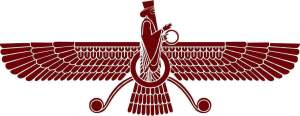
I have written extensively about Canada’s federal political system, which is dysfunctional, based on academic books used at Canadian universities. Interestingly, some Iranian factions see Canada’s federal system as a potential alternative model following the hypothetical collapse of the Islamic Republic of Iran. Let’s use Canadian academics again to understand the notion of the federal system.
Legal powers are split between central and regional governments in a federal system. This allows each level to have decision-making capabilities.1 This results in multiple levels of jurisdictional powers between the two government levels.2 Neither government level has authority over the other. Both federal and provincial legislatures can create laws that directly affect citizens.3
Did you know that there are more unitary states than federal states globally? Despite this, federal states comprise only twenty-one and are home to nearly half the world’s population.4 In a federal system, each level of government has complete control over certain areas,5 while other areas may have some shared jurisdiction.6
The Canadian Constitution establishes a federal system of governance where authority is divided or shared between the federal Parliament and provincial assemblies.7 However, the Constitution leaves several aspects undefined or loosely defined.8 As a result, many administrative regulations are left to contemporary politicians to determine based on historical, economic, and political factors.9
The federal and provincial governments govern the same people and territory, often leading to political conflicts.10 These disputes typically involve disagreements over decision-making authority and who should be responsible for paying for decisions.11 Additionally, there are debates about whether all provinces should be treated equally or if some should receive special treatment from the federal government.12
Type of Federalism
- Centralized Federalism has two levels of authority; the central government dominates.13
- Decentralized Federalism has two levels of authority; regional government dominates.14
- Confederation has one level of authority; the alliance of co-equal states.15
Unitary State
- One level of authority.16
Iranian factions advocate for Canada’s Federalism for Iran; they are hoping for the future of Iran when the Islamic Republic of Iran does not exist; they call for a referendum to separate their region from the rest of Iran.
What information are the separatists leaving out regarding the 1995 and previous Quebec referendum for separation from Canada? It is worth noting that Canadian Prime Minister Pierre Elliott Trudeau, who was half English and half French, and Canadian Prime Minister Jean Chrétien, who was 100% French, opposed Quebec’s separation from Canada. However, Chrétien did permit a referendum in 1995.
In 1995, the Quebec referendum asked voters in Quebec if they wanted the province to declare independence and become an independent country. The condition was that they had to offer a political and economic agreement to Canada. The majority of Quebec voters voted against separation.
After the Meech Lake and Charlottetown constitutional accords failed, the provincial Parti Québécois government of Jacques Parizeau launched the referendum, which took years of debate and planning. Despite initial predictions of a heavy sovereigntist defeat, an eventful and complex campaign followed, with the “Yes” side flourishing under the leadership of Bloc Québécois leader Lucien Bouchard.
On October 30th, 1995, Quebec had its highest voter turnout ever, with 93.52% of eligible voters casting their ballots—the “No” option won by 54,288 votes,17 receiving 50.58%.18 The day after the vote, Quebec Premier Parizeau announced his resignation.19 He later revealed that if the “Yes” option had won and negotiations with the federal government had failed or been refused, he would have immediately proceeded with a unilateral declaration of independence,20 which was the federal government’s position in the event of a “Yes” victory.21
Some Iranian separatist groups are considering separating a part of Iran to create their own kingdoms. They believe they can use their knowledge of Federalism to convince locals to vote for self-autonomy in the region. However, this plan may need to be revised as it could lead to ongoing conflict. It may be necessary for these groups to revise their ideas.
Endnote:
1 Jackson, R. J. (2010). Canadian Government in Transition (5th ed., pp. 74). Pearson Canada.
2 Jackson, R. J. (2010). Canadian Government in Transition (5th ed., pp. 74). Pearson Canada.
3 Jackson, R. J. (2010). Canadian Government in Transition (5th ed., pp. 74). Pearson Canada.
4 Jackson, R. J. (2010). Canadian Government in Transition (5th ed., pp. 74). Pearson Canada.
5 Jackson, R. J. (2010). Canadian Government in Transition (5th ed., pp. 74). Pearson Canada.
6 Jackson, R. J. (2010). Canadian Government in Transition (5th ed., pp. 74). Pearson Canada.
7 Jackson, R. J. (2010). Canadian Government in Transition (5th ed., pp. 74). Pearson Canada.
8 Jackson, R. J. (2010). Canadian Government in Transition (5th ed., pp. 74). Pearson Canada.
9 Jackson, R. J. (2010). Canadian Government in Transition (5th ed., pp. 74). Pearson Canada.
10 Jackson, R. J. (2010). Canadian Government in Transition (5th ed., pp. 74). Pearson Canada.
11 Jackson, R. J. (2010). Canadian Government in Transition (5th ed., pp. 74). Pearson Canada.
12 Jackson, R. J. (2010). Canadian Government in Transition (5th ed., pp. 74). Pearson Canada.
13 Jackson, R. J. (2010). Canadian Government in Transition (5th ed., pp. 74). Pearson Canada.
14 Jackson, R. J. (2010). Canadian Government in Transition (5th ed., pp. 74). Pearson Canada.
15 Jackson, R. J. (2010). Canadian Government in Transition (5th ed., pp. 74). Pearson Canada.
16 Jackson, R. J. (2010). Canadian Government in Transition (5th ed., pp. 74). Pearson Canada.
17 Jackson, R. J. (2010). Canadian Government in Transition (5th ed., pp. 103). Pearson Canada.
18 Jackson, R. J. (2010). Canadian Government in Transition (5th ed., pp. 103). Pearson Canada.
19 Jackson, R. J. (2010). Canadian Government in Transition (5th ed., pp. 103). Pearson Canada.
20 Jackson, R. J. (2010). Canadian Government in Transition (5th ed., pp. 103). Pearson Canada.
21 Jackson, R. J. (2010). Canadian Government in Transition (5th ed., pp. 103). Pearson Canada.



No comments:
Post a Comment